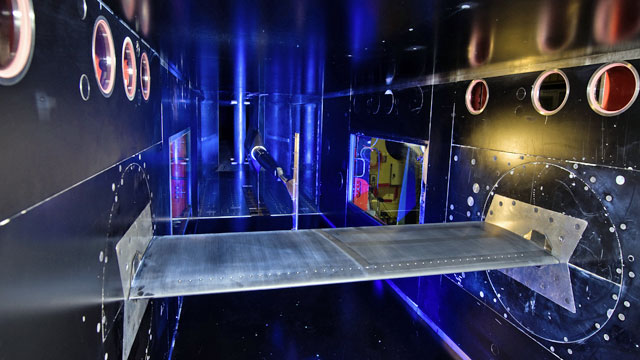German aerospace research centre DLR is experimenting with modified helicopter rotor blades which discharge pressurised air through small holes along the leading edge to dampen airfoil vibrations and increase aircraft manoeuvrability.
Main rotor blades tend to stall in the part of the rotation cycle when the airfoil travels in opposite direction of flight. Such dynamic stall happens particularly in high-speed forward flight or fast manoeuvres.
The airfoil not only loses lift and drag increases when the airflow becomes turbulent, but the rotor construction is also subject to vibrations and significant strain. This limits top speed and manoeuvrability of helicopters, particularly at high altitudes.
 |
|---|
| DLR |
Releasing air from the holes in the leading edge can reduce the turbulences and substantially dampen the associated pitch-down momentum of the rotor, says DLR.
The scientists tested a 1m (3ft) fixed rotor blade in the transonic windtunnel of DLR's Institute of Aerodynamics and Flow Technology in Göttingen, which can simulate air speeds from about 540kt (1,000km/h) to Mach 2.2.
The blade was equipped with 42 holes with 3mm diameter to discharge the pressurised air, as well as 74 sensors which measure air pressure changes across the airfoil 6,000 times per second.
As a next step, DLR wants to test a rotating blade and verify the existing results.
The research team envisions an application which can be manually activated by the pilot in critical manoeuvres to enhance the helicopter's performance.
The idea of influencing aircraft aerodynamics by discharging pressurised air from airfoils goes back to the 1940s, when such experiments were conducted in Göttingen.
Karl Richter, head of DLR's "STELAR" (stall and transition on elastic rotor blades) project, says the windtunnel experiment has been the most elaborate dynamic stall control assessment internationally so far.
Source: Flight International























